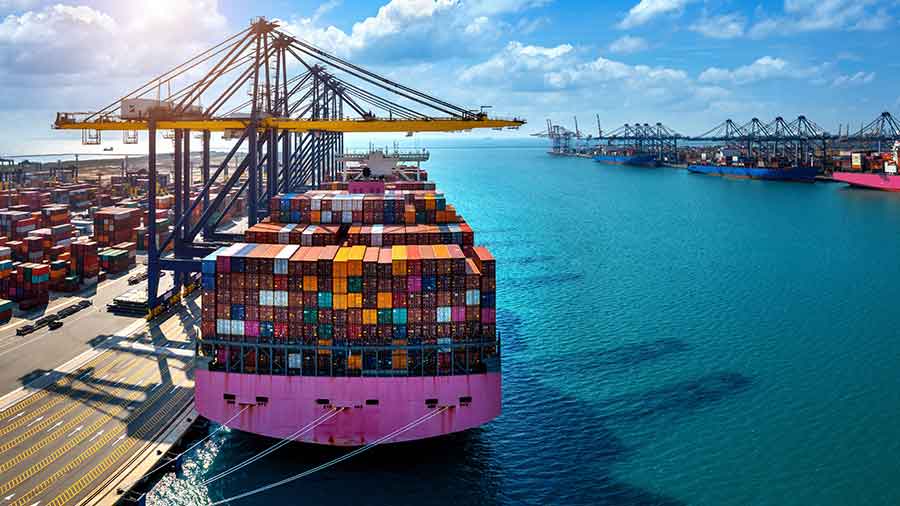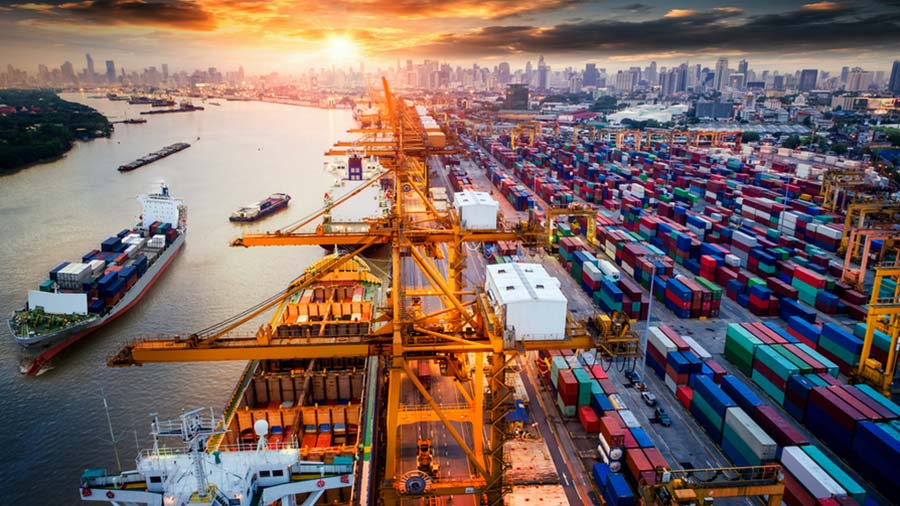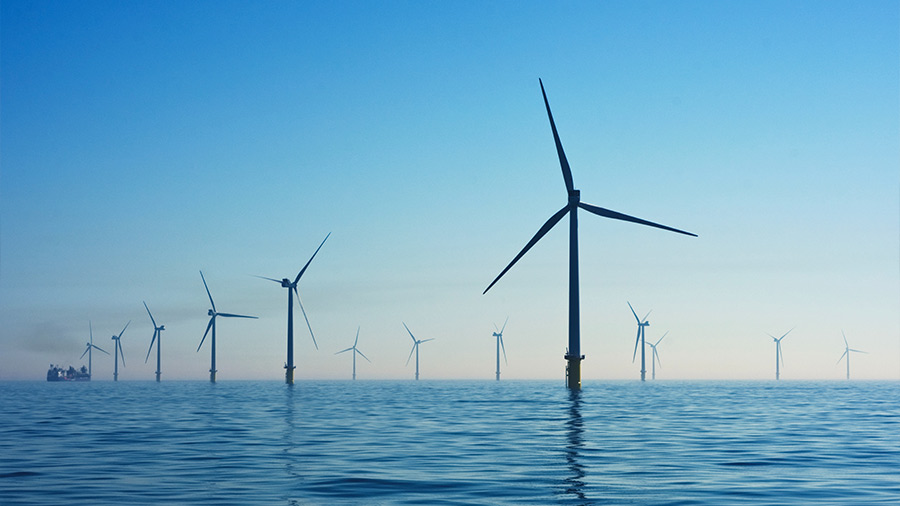Blackpink is coming to Hanoi. Is this an anomaly or is Vietnam’s live entertainment industry poised for a boom? And if it is about to take-off, what could this mean for foreign entertainers?
It’s estimated that there are more than 5,000 songs about the Vietnam War. Popular Western artists from Bob Dylan to Bruce Springsteen have made hit after hit encapsulating a turbulent time in world history.
For a long time, however, it was unlikely they would ever perform live in Vietnam with foreign bands tending to avoid the emerging market preferring more developed countries close by.
But this could be changing. Last year, John Legend performed at the Hanoi Opera House and Jack White of White Stripes fame performed in Ho Chi Minh City. Later this week, South Korea’s Blackpink is slated to perform in Hanoi.
These concerts could be anomalies. They could be simply a way for these performers to make a couple of bucks from a holiday to the Southeast Asian nation that has gone all out in recent years promoting international tourism. But it could also be a sign that the times are a changin’. That live performance art, though fledgling, may be on the cusp of a boom.
With the manufacturing industry struggling and GDP growth on the decline, the live entertainment industry is a prime target for development. To make a sizable impact on Vietnam’s economy, however, it will require a lot of foreign expertise and investment. This means there could be a myriad of opportunities just over the horizon for foreign entertainers, as well as a slew of entertainment industry adjacent services.
With this in mind, here’s what foreign entertainers and foreign entertainment firms should know about performing live in Vietnam.
Why don’t more foreign entertainers perform in Vietnam?
Administrative procedures
In principle, the regulatory requirements for holding a live concert in Vietnam are relatively simple. A dossier or application must be completed and submitted to the Ministry of Culture, Sports, and Tourism, and permission must be sought from the provincial People’s Committee where the event is set to be held. This is alongside a relatively small fee that will depend on the duration of the performance.
However, in said dossier, applicants must include a copy of the content, for example, a set list with lyrics. If they are in a foreign language, the lyrics must be coupled with a Vietnamese translation.
The translated lyrics are then assessed to ensure that they do not breach Vietnam’s strict censorship laws, and this is where it can become somewhat tricky. Vietnam’s censorship rules are somewhat ambiguous and open to interpretation like the lyrics of many popular songs. This can make it difficult to translate, which in turn can leave the translated lyrics open to misinterpretation and subsequent rejection by the authorities.
Furthermore, live performances need a permit from local People’s Committees in the jurisdiction within which the event is to be held. Administrative procedures in Vietnam, however, can take a long time to complete. In the Provincial Governance and Public Administration Performance Index 2022 Hanoi, where Blackpink is slated to play, scored just 43.97 out of a possible 80.
On top of that, performers and their entourages also need business visas to perform, which means engaging with the Department of Immigration which is a part of the Ministry of Public Security. Costs are nominal and procedures are relatively straightforward but working with multiple ministries and departments can make coordination difficult.
Then there is tax. After performing, any profits made will also, in most cases, be subject to some form of tax. This would most likely be Vietnam's Foreign Contractor Tax; however, for clear guidance, foreign performers should discuss their tax obligations with a local tax professional.
Moreover, these funds will need to be remitted to the performer's home country. This can also be challenging with firms and entertainers required to complete a number of procedures as well as provide proof that funds were acquired legitimately.
That is to say, from an administrative perspective, performing in Vietnam can be a lot of work.
Ticket prices and venue size
When Blackpink tickets went on sale around the middle of July, the most valuable tickets were snapped up quickly. However, this wasn’t just because thousands of diehard fans couldn’t wait to see the popular South Korean girl group.
Instead, a number of Vietnamese took the opportunity to try and make a cheap buck by buying up tickets and then reselling them at a premium.
Notably many failed to resell those tickets at inflated prices and instead a lot of them were simply resold at face value or at a loss. There were, however, already complaints about ticket prices before the scalpers stepped in.
For the region, ticket prices in Vietnam were relatively high.
For comparison, tickets to a Blackpink performance earlier in the year in Kuala Lumpur ranged from US$83 to US$406. In Jakarta, they were US$90 to US$253, but in Hanoi they went from US$51 to US$414. Hanoi’s highest priced tickets were notably higher than in Singapore, a country with a GDP per capita nearly 20 times that of Vietnam, where they ranged from US$124 to US$295.
Though there were likely a number of reasons for this, venue size cannot be overlooked.
Hanoi’s biggest concert venue, My Dinh Stadium, fits just 40,000 people, whereas Kuala Lumpur’s National Stadium Bukit Jalil fits 85,000, Jakarta’s Gelora Bung Karno Stadium fits 77,000, and Singapore’s National Stadium fits 55,000.
Blackpink venue size, ticket price
| Venue | Ticket price | US$ | |||||||||||||||||||||||||||||||||||||||||||||||||||||||||||||||||||||||||||||||||||||||||||||||||||||||||||||||||||||||||||||||||||||||||||||||||||||||||||||||||||||||||||||||||||||||||||||||||||||||||||||||||||||||||||||||||||||||||||||||||||||||||||||||||||||||||||||||||||||||||||||||||||||||||||||||||||||||||||||||||||||||||||||||||||||||||||||||||||||||||||||||||||||||||||||||||||||||||||||||||||||||||||||||||||||||||||||||||||||||||||||||||||||||||||||||||||||||||||||||||||||||||||||||||||||||||||||||||||||||||||||||||||||||||||||||||||||||||||||||||||||||||||||||||||||||||||||||||||||||||||||||||||||||||||||||||||||||||||||||||||||||||||||||||||||||||||||||||||||||||||||||||||||||||||||||||||||||||||||||||||||||||||||||||||||||||||||||||||||||||||||||||||||||||||||||||||||||||||||||||||||||||||||||||||||||||||||||||||||||||||||||||||||||||||||||||||||||||||||||||||||||||||||||||||||||||||||||||||||||||||||||||||||||||||||||||||||||||||||||||||||||||||||||||||||||||||||||||||||
| City | Name | Capacity | Min | Max | Min | Max | |||||||||||||||||||||||||||||||||||||||||||||||||||||||||||||||||||||||||||||||||||||||||||||||||||||||||||||||||||||||||||||||||||||||||||||||||||||||||||||||||||||||||||||||||||||||||||||||||||||||||||||||||||||||||||||||||||||||||||||||||||||||||||||||||||||||||||||||||||||||||||||||||||||||||||||||||||||||||||||||||||||||||||||||||||||||||||||||||||||||||||||||||||||||||||||||||||||||||||||||||||||||||||||||||||||||||||||||||||||||||||||||||||||||||||||||||||||||||||||||||||||||||||||||||||||||||||||||||||||||||||||||||||||||||||||||||||||||||||||||||||||||||||||||||||||||||||||||||||||||||||||||||||||||||||||||||||||||||||||||||||||||||||||||||||||||||||||||||||||||||||||||||||||||||||||||||||||||||||||||||||||||||||||||||||||||||||||||||||||||||||||||||||||||||||||||||||||||||||||||||||||||||||||||||||||||||||||||||||||||||||||||||||||||||||||||||||||||||||||||||||||||||||||||||||||||||||||||||||||||||||||||||||||||||||||||||||||||||||||||||||||||||||||||||||||||||||||||||
| Jakarta | Gelora Bung Karno Stadium |
77,000 |
IDR |
1.35 million |
3.8 million |
$90 |
$253 |
||||||||||||||||||||||||||||||||||||||||||||||||||||||||||||||||||||||||||||||||||||||||||||||||||||||||||||||||||||||||||||||||||||||||||||||||||||||||||||||||||||||||||||||||||||||||||||||||||||||||||||||||||||||||||||||||||||||||||||||||||||||||||||||||||||||||||||||||||||||||||||||||||||||||||||||||||||||||||||||||||||||||||||||||||||||||||||||||||||||||||||||||||||||||||||||||||||||||||||||||||||||||||||||||||||||||||||||||||||||||||||||||||||||||||||||||||||||||||||||||||||||||||||||||||||||||||||||||||||||||||||||||||||||||||||||||||||||||||||||||||||||||||||||||||||||||||||||||||||||||||||||||||||||||||||||||||||||||||||||||||||||||||||||||||||||||||||||||||||||||||||||||||||||||||||||||||||||||||||||||||||||||||||||||||||||||||||||||||||||||||||||||||||||||||||||||||||||||||||||||||||||||||||||||||||||||||||||||||||||||||||||||||||||||||||||||||||||||||||||||||||||||||||||||||||||||||||||||||||||||||||||||||||||||||||||||||||||||||||||||||||||||||||||||||||||||||||||||
| Singapore | Singapore National Stadium |
55,000 |
SGD |
168 |
398 |
$124 |
$295 |
||||||||||||||||||||||||||||||||||||||||||||||||||||||||||||||||||||||||||||||||||||||||||||||||||||||||||||||||||||||||||||||||||||||||||||||||||||||||||||||||||||||||||||||||||||||||||||||||||||||||||||||||||||||||||||||||||||||||||||||||||||||||||||||||||||||||||||||||||||||||||||||||||||||||||||||||||||||||||||||||||||||||||||||||||||||||||||||||||||||||||||||||||||||||||||||||||||||||||||||||||||||||||||||||||||||||||||||||||||||||||||||||||||||||||||||||||||||||||||||||||||||||||||||||||||||||||||||||||||||||||||||||||||||||||||||||||||||||||||||||||||||||||||||||||||||||||||||||||||||||||||||||||||||||||||||||||||||||||||||||||||||||||||||||||||||||||||||||||||||||||||||||||||||||||||||||||||||||||||||||||||||||||||||||||||||||||||||||||||||||||||||||||||||||||||||||||||||||||||||||||||||||||||||||||||||||||||||||||||||||||||||||||||||||||||||||||||||||||||||||||||||||||||||||||||||||||||||||||||||||||||||||||||||||||||||||||||||||||||||||||||||||||||||||||||||||||||||||
| Kuala Lumpur | National Stadium Bukit Jalil |
85,000 |
MYR |
388 |
to 1,888 |
$83 |
$406 |
||||||||||||||||||||||||||||||||||||||||||||||||||||||||||||||||||||||||||||||||||||||||||||||||||||||||||||||||||||||||||||||||||||||||||||||||||||||||||||||||||||||||||||||||||||||||||||||||||||||||||||||||||||||||||||||||||||||||||||||||||||||||||||||||||||||||||||||||||||||||||||||||||||||||||||||||||||||||||||||||||||||||||||||||||||||||||||||||||||||||||||||||||||||||||||||||||||||||||||||||||||||||||||||||||||||||||||||||||||||||||||||||||||||||||||||||||||||||||||||||||||||||||||||||||||||||||||||||||||||||||||||||||||||||||||||||||||||||||||||||||||||||||||||||||||||||||||||||||||||||||||||||||||||||||||||||||||||||||||||||||||||||||||||||||||||||||||||||||||||||||||||||||||||||||||||||||||||||||||||||||||||||||||||||||||||||||||||||||||||||||||||||||||||||||||||||||||||||||||||||||||||||||||||||||||||||||||||||||||||||||||||||||||||||||||||||||||||||||||||||||||||||||||||||||||||||||||||||||||||||||||||||||||||||||||||||||||||||||||||||||||||||||||||||||||||||||||||||
| Hanoi | My Dinh Stadium |
40,000 |
VND |
1.2 million |
9.8 million |
$51 |
$414 |
||||||||||||||||||||||||||||||||||||||||||||||||||||||||||||||||||||||||||||||||||||||||||||||||||||||||||||||||||||||||||||||||||||||||||||||||||||||||||||||||||||||||||||||||||||||||||||||||||||||||||||||||||||||||||||||||||||||||||||||||||||||||||||||||||||||||||||||||||||||||||||||||||||||||||||||||||||||||||||||||||||||||||||||||||||||||||||||||||||||||||||||||||||||||||||||||||||||||||||||||||||||||||||||||||||||||||||||||||||||||||||||||||||||||||||||||||||||||||||||||||||||||||||||||||||||||||||||||||||||||||||||||||||||||||||||||||||||||||||||||||||||||||||||||||||||||||||||||||||||||||||||||||||||||||||||||||||||||||||||||||||||||||||||||||||||||||||||||||||||||||||||||||||||||||||||||||||||||||||||||||||||||||||||||||||||||||||||||||||||||||||||||||||||||||||||||||||||||||||||||||||||||||||||||||||||||||||||||||||||||||||||||||||||||||||||||||||||||||||||||||||||||||||||||||||||||||||||||||||||||||||||||||||||||||||||||||||||||||||||||||||||||||||||||||||||||||||||||
In this light, from a simple supply and demand perspective, upgrading existing facilities could open up the market, reduce prices, and make live performances more accessible for everyday Vietnamese. For now, however, sizable venues are limited.
But whereas venue size and administrative hurdles might deter foreign performers from performing in Vietnam, there are several pull factors propelling the live concert space forward.
What’s driving interest in holding more live concerts in Vietnam?
High disposable incomes among core markets
As Vietnam's economy has boomed over the last decade or so, wages have skyrocketed. In the first half of 2023, Vietnam’s average wage was VND 7 million (US$296), almost double the VND 4.1 million (US$173.40) workers were earning on average in 2013.
Alone this doesn’t say much; however, alongside this wage growth Vietnamese people have also changed how they live.
Vietnam’s youth are waiting later in life to have children and get married. Particularly in the cities, young Vietnamese are focused on their education and establishing themselves in their careers. These young, single Vietnamese often tend to live at home with their parents and as a result of all of this combined, they often have relatively large disposable incomes to spend on shopping and entertainment.
A tourism industry thirsty for tourists
Vietnamese Gen Z are also keen to party like their regional counterparts and, if they can’t get what they want locally, many have the means and motivation to go abroad, and they do.
For example, Agoda reported a spike in hotel inquiries in Singapore coming from Vietnam when it was announced that Taylor Swift would be performing in the island nation. Just a short flight from Vietnam’s financial hub of Ho Chi Minh City, a weekend trip to see one of the biggest performing artists on the planet is not beyond the means of many.
The tourism sector in Vietnam is well aware of this too. In this light, holding more live events locally might not only stymie the outflow of Vietnamese tourism dollars, but it might also attract more tourists from other parts of the region, or even other parts of the world.
Along this line of thought, the Ministry of Culture, Sports and Tourism has also announced plans to put greater effort into developing nighttime tourism products with cultural and artistic performances one of five key pillars of the program.
Where are the opportunities for foreign performers?
The big cities
Firstly, it’s worth noting that although average incomes have risen rapidly, wealth has not always been evenly distributed around the country. On top of that, many parts of Vietnam are still relatively conservative and are more inclined toward traditional music and cultural performances. Consequently, foreign performers are more likely to find themselves better appreciated in Vietnam’s big cities, namely: Ho Chi Minh City, Hanoi, and Danang.
Smaller venues
My Dinh stadium, where Blackpink is slated to perform, has faced a number of challenges in relation to maintenance of the facility in recent years. Furthermore, with few big concerts held in Vietnam in general, finding the equipment and expertise required to rig a sound system of the nature required for a 40,000-seat arena may be challenging.
That said, there are some smaller, well-equipped spaces that may only cater to a smaller crowd, but can provide the quality of experience many bands hold dear. Jack White, for example, played at Capital Studios in Ho Chi Minh City to a crowd of only several hundred people.
Partnerships
Whereas smaller venues may produce lower revenue in terms of ticket sales, sponsorships with major chains may be one way to plug the gap. As a relatively new market, many experienced big brands are looking for ways to boost their brand value and brand awareness. Starbucks, for example, has partnered with Blackpink and together they are launching a signature drink under the South Korean pop star’s brand.
Merchandise
Attending concerts isn’t just about the music for many Vietnamese, it’s also a status symbol. In this vein, Blackpink lightsticks (hammers) are on sale for VND 1.1 million (US$42) and are proving incredibly popular, according to local press. On a side note, as one of the biggest apparel manufacturers in the world, producing merchandise in Vietnam can be very cost effective. This could be another angle from which foreign bands may find value in this rapidly emerging market.
Notes for foreign firms
Keep track of regulatory changes. These changes can sometimes drastically alter a firm’s chances of success. With this in mind, firms should keep abreast of changes to regulations around live performances through the local press and by subscribing to sites like the Vietnam Briefing.
Consider engaging a local partner. Whereas working with Vietnamese firms can sometimes be challenging, local promoters will likely have the experience and connections necessary to navigate regulatory and administrative hurdles more effectively. Finding a local partner can be done by utilizing the services of a professional business matchmaking team.
Start small. This isn’t just about venue size. Foreign bands and artists can test the waters by looking at selling merchandise and music either cross-border (Spotify, for example) or by engaging a local distributor. This is a relatively low-cost way of determining whether a local live performance will be worthwhile.
See also: Getting Your Goods to Market in Vietnam
Performing in Vietnam in a nutshell
Performers that neglect or avoid this emerging market may do so at their peril. With GDP growth clocking in at around 6 to 8 percent, disposable incomes are on an upward trajectory among Vietnam’s 100-million strong consumer base.
But the market is still very young and underdeveloped, and it may be some time before Vietnam’s young people can expect to see regular performances from the world’s biggest international acts. That said, there is growing demand and there is ample opportunity for performers to find value in this emerging market with the right advice and guidance.
To learn more, contact the business advisory experts at Dezan Shira and Associates.




















